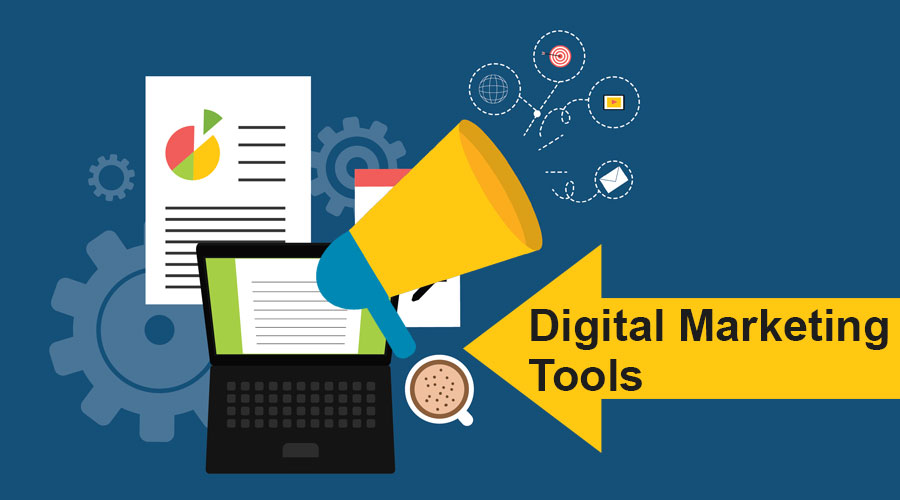
Social Media Marketing is a long-term process, where we concentrate on posting updates, social media campaigns, social media customers services, and branding activites. Even though, many of you might consider SMO as a part of SMM, but the fact remains, SMM starts when SMO ends.
Facebook:
Facebook one of the top social networking site in the world.
We can create account & page on facebook.
Can do multiple post on facebook.
Types of facebook page:- fan page, professional page, business page.
Here are some common uses of Facebook:
Social Networking: The primary use of Facebook is for social networking. Users connect with friends, family, colleagues, and acquaintances by sending friend requests, accepting invitations, and forming online communities.
Sharing Content: Users can share various types of content such as photos, videos, status updates, links, and articles with their friends and followers on Facebook. This allows users to keep others updated about their lives, interests, and activities.
Communication: Facebook provides various communication tools such as messaging, voice calls, and video calls. Users can have private conversations with individuals or groups, making it a convenient platform for staying in touch with others.
Event Planning: Facebook allows users to create and manage events. They can invite guests, share event details, send reminders, and communicate with attendees. It’s a useful tool for organizing gatherings, parties, meetings, and other events.
Networking: Professionals use Facebook for networking purposes. They join industry-specific groups, connect with colleagues, share professional achievements, and explore job opportunities. Facebook’s networking features help users expand their professional contacts and advance their careers.
Promotion and Marketing: Businesses, organizations, and individuals use Facebook for promotion and marketing purposes. They create pages, post content, run ads, and engage with their audience to increase brand awareness, drive traffic to their websites, and boost sales.
Information and News: Facebook serves as a platform for accessing news and information. Users follow news outlets, journalists, bloggers, and other sources to stay informed about current events, trends, and developments in various fields.
Entertainment: Users use Facebook for entertainment purposes such as watching videos, playing games, participating in quizzes, and joining online communities related to their hobbies and interests.
Expression and Creativity: Facebook provides a platform for users to express themselves creatively. They can share their artwork, poetry, music, writings, and other creative works with their friends and followers.
Modules In Digital Marketing.Instagram:
Instagram is a popular social media platform we used for sharing photos and videos. It allows users to upload media content, apply filters and edits, and share it with their followers or privately with selected individuals. Users can also engage with content by liking, commenting, and sharing posts. Instagram also features stories, which are short-lived posts that disappear after 24 hours, and IGTV, a platform for longer-form video content. Additionally, Instagram offers messaging features such as direct messaging and group chats, enabling users to communicate privately with others. Overall, Instagram serves as a platform for personal expression, social networking, and content discovery.
Twitter:
Twitter is the micro blogging website. We can use twitter to create profile and can do regular post or twit on twitter.The platform is widely used for various purposes, including:
Networking: Twitter is a powerful tool for networking and connecting with people who share similar interests or professional backgrounds. Users can follow others, engage in conversations, and build relationships with peers, influencers, and industry leaders.
Information Sharing: Twitter serves as a real-time news source where users can receive updates on current events, trends, and developments from around the world. Many journalists, news outlets, and organizations use Twitter to share breaking news and updates.
Promotion and Marketing: Businesses, brands, and individuals use Twitter to promote their products, services, events, and content. Twitter provides a platform for targeted advertising, allowing users to reach specific demographics based on interests, location, and other factors.
Customer Service: Many companies use Twitter as a customer service channel, providing support, addressing inquiries, and resolving issues raised by customers. The platform enables direct communication between businesses and consumers in a public forum.
Expression and Advocacy: Twitter allows users to express themselves, share their opinions, and advocate for causes they believe in. It has been a platform for activism, social movements, and raising awareness about various issues.
Engagement and Interaction: Twitter facilitates engagement and interaction through features such as retweets, likes, replies, and mentions. Users can participate in conversations, join communities, and interact with a diverse range of people from around the world.
Entertainment: Many celebrities, entertainers, and content creators use Twitter to share updates, behind-the-scenes glimpses, and interact with their fans. Users can follow their favorite personalities and stay updated on their latest projects and activities.
LinkedIn:
LinkedIn is the world’s largest professional network on the internet. You can use LinkedIn to find the right job or internship, connect and strengthen professional relationship, and learn the skills you need to succeed in your career. You can access LinkedIn form a desktop, LinkedIn mobile app, mobile web experience, or the LinkedIn Lite Android mobile app.
Here are some common uses of LinkedIn:
Professional Networking: LinkedIn allows users to connect with professionals in their industry, potential employers, colleagues, and mentors. Building a strong network can open up opportunities for collaboration, job opportunities, and industry insights.
Job Searching: Many companies use LinkedIn to post job vacancies and recruit talent. Users can search for job openings, apply directly through the platform, and even receive job recommendations based on their skills and experience.
Personal Branding: LinkedIn provides a platform for individuals to showcase their skills, experience, and accomplishments. Users can create a detailed profile that serves as an online resume, including work history, education, skills, and recommendations. Sharing industry-related content, articles, and updates can help establish expertise and credibility in a particular field.
Company Branding and Marketing: Businesses can create company pages on LinkedIn to showcase their products, services, and company culture. Posting regular updates, sharing relevant content, and engaging with followers can help increase brand visibility and attract potential clients, partners, and employees.
Learning and Professional Development: LinkedIn offers various learning resources through LinkedIn Learning (formerly Lynda.com), where users can access online courses, tutorials, and certifications on a wide range of topics, including business, technology, creativity, and personal development.
Industry Insights and News: Users can follow companies, influencers, and industry leaders to stay updated on the latest trends, news, and insights in their field. Participating in relevant groups and discussions can also provide valuable networking opportunities and knowledge sharing.
Recruitment and Talent Acquisition: LinkedIn’s advanced search features allow recruiters and hiring managers to find and connect with potential candidates based on specific criteria such as skills, experience, location, and industry. They can also use LinkedIn Recruiter, a premium tool designed for talent acquisition professionals.
Sales and Lead Generation: For businesses, LinkedIn can be a valuable tool for generating leads, building relationships with potential clients, and expanding their customer base. Sales professionals can use LinkedIn Sales Navigator to identify and reach out to prospects more effectively.
Digital Marketing Course Modules.YouTube:
YouTube is a popular online video-sharing platform where users can upload, share, and view videos. It was created in February 2005 by three former PayPal employees: Steve Chen, Chad Hurley, and Jawed Karim. In November 2006, YouTube was acquired by Google for $1.65 billion, and it has since become one of the most visited websites in the world.YouTube allows users to upload videos in a wide range of categories, including music, entertainment, education, gaming, vlogs, and more. Users can interact with videos by liking, commenting, and sharing them. Additionally, YouTube offers features such as live streaming, personalized recommendations, and subscription-based channels (YouTube Premium).Over the years, YouTube has evolved into a significant platform for content creators, artists, educators, and businesses to reach a global audience. It has also become an important source of entertainment and information for millions of people worldwide.
Pinterest:
Pinterest is one of the most popular photo sharing website in the world. We can use pinterest to update and publish any kind of photo banner and images on the pinterest.
There are two types of accounts in pinterest:- 1) Personal Account 2) Business Account.
Benefits of Pinterest
`1. Digital Scrapbooking:- With an innovative way of organizing information, the site is visual fiesta of inspirational quotes, wedding-plan brainstorming, travel bucket lists, DIY how-tos, must-have shopping lists and food photography. Just from these examples we’re sure you can imagine just how many ways you can share your products and services on Pinterest.
2. Increased Direct Traffic:-Pinterest’s most powerful feature is its potential for traffic generation. Nearly all of the images on
Pinterest link to the original source of the image.
3. Empower Your Brand:- With Pinterest, you can personalize your page to your business name and your logo as your profile picture to reach maximum exposure every time you pin an image.
4. User Driven:- Let Pinterest users evangelize your products/services for you-when a user pins your pin, other see it and when they pin the pin again, your coverage grows that much more.
Digital Training India
When managing multiple social media platforms, consider the following tips:
Understand Your Audience: Tailor your content to fit the demographics and preferences of each platform’s audience.
Consistent Branding: Maintain consistent branding across all platforms to strengthen your brand identity.
Content Strategy: Develop a content strategy that aligns with the strengths and features of each platform.
Engagement and Interaction: Actively engage with your audience by responding to comments, messages, and participating in conversations.
Analytics and Insights: Use analytics tools provided by each platform to track performance and adjust your strategy accordingly.
Cross-Promotion: Cross-promote your content across different platforms to reach a wider audience.
Platform-Specific Features: Utilize unique features offered by each platform to create diverse and engaging content.
Stay Updated: Social media platforms constantly evolve, so stay updated with new features and trends to keep your content fresh and relevant.
By leveraging the strengths of each platform and tailoring your content accordingly, you can effectively manage a presence across multiple social media platforms.
 Connectivity: social networking platforms allow individuals to connect with friends, family, and acquaintances across the globe, irrespective of geographical barriers. This connectivity facilitates maintaining relationships, fostering new connections, and strengthening communities.
Connectivity: social networking platforms allow individuals to connect with friends, family, and acquaintances across the globe, irrespective of geographical barriers. This connectivity facilitates maintaining relationships, fostering new connections, and strengthening communities.










